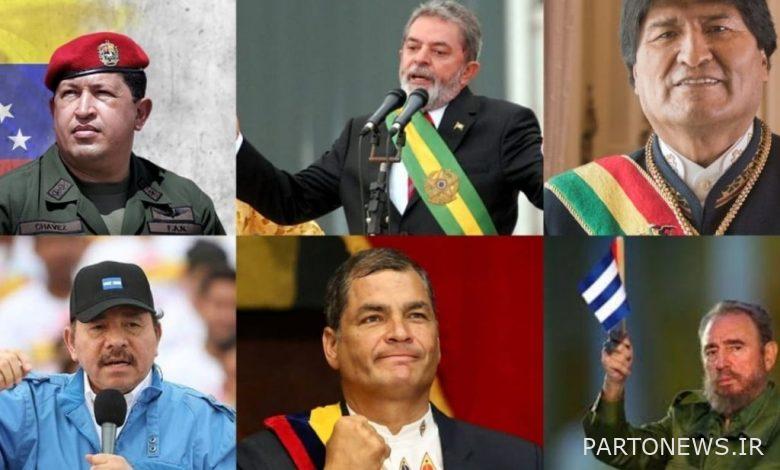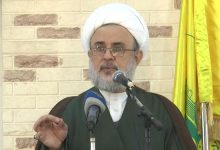The “Monroe Doctrine” authorizes US crimes in Latin America

US military attacks in Latin America
The history of American development is also the story of the bloody and tearful resistance of Latin America.
After the formation of the United States of America, which was accompanied by the expulsion of the North American Indians from their territory, a policy of expansion against Mexico, adopted by its southern neighbor. In the war, the United States captured half of Mexico’s territory, including all or parts of the present-day states of California, Nevada, Utah, New Mexico, Texas, Arizona, Colorado, and Wyoming.
Mexico lost some of its significant mineral resources, which greatly affected the country’s economic development. At the end of the 19th century, America made another attack and in Spanish-American Waroccupied Puerto Rico in the Caribbean Sea and occupied Cuba as well.
In the beginning of the 20th century, repeated American aggressions in Latin America gradually brought the countries of this region under American influence. In 1903, the United States forced the port Cuba In the Caribbean Sea, it leased Guantanamo and turned it into its first military base outside the territory of this country. In addition, until today, Washington has refused to return this port to Cuba.
In 1915, the United States, under the pretext of protecting “communities far from the homeland” from local unrest, sent its troops to occupy “Haiti” sent and did not leave it until 1934.
Dominican Republic It was also under American occupation from 1916 to 1924. America did this to collect the debts of the governments of this country.
In 1965, Washington once again attacked the island after overthrowing the US-backed government in the Dominican Republic with a civil war and sent 40,000 of its troops there under the pretext of “restoring order”.
Also, in 1989, he sent his special forces under the guise of “protecting the lives and property of American citizens” to attack Panama sent and attempted to take permanent control of the Panama Canal by overthrowing the military government there.
Where did the Monroe Doctrine begin?
The dual principles of American foreign policy were announced in Monroe’s message to Congress in 1823. These two principles emphasize the formation of new colonies and the political involvement of European governments in America. America has mentioned this doctrine in justifying its actions in the Caribbean Sea (including the issue of Cuba).
The dual principles of American foreign policy were announced in Monroe’s message to Congress in 1823. These two principles emphasize the formation of new colonies and the political involvement of European governments in America.
The announcement of the doctrine was due to two issues, one of which was that the Russian government had prevented non-Russian ships from traveling in the northwest coast of North America (at that time Russia was in control of Alaska) and the other was the fear of the union of European governments (Prussia, Austria). and Russia) who might rush to Spain’s aid and bring the newly liberated countries of Latin America under their control once again.
When the Europeans were engaged in bloody wars in their colonial rivalries and their internal revolutions to establish more modern and democratic governments reached their peak, the United States of America understood the space well and kept itself away from the European conflicts and also its spheres of influence. In the American continent (Latin America) it was determined that this made him concentrate his energy to increase his power and wealth and receive the least amount of damage.
America has mentioned this doctrine in justifying its actions in the Caribbean Sea (including the issue of Cuba).
The looting and merciless sanctions of the United States
Washington has imposed and continues to impose discriminatory tariffs and sanctions on Latin American countries, further limiting their economic development.
Venezuela Since 2015, it has received more than 430 sanctions from the United States and its allies, and the country’s economy has suffered more than 130 billion dollars.
By 1930, it controlled approximately 1.4 million hectares of land Costa Rica, Guatemala, Honduras and Panama And also more than 2400 kilometers of railways and customs, telecommunications and other basic services of these countries were at the disposal of the American company “United Fruit”.
In 1947, American companies alone accounted for 38 percent of Honduras, 22.7 percent of Guatemala, 16.5 percent of Costa Rica, and 12.3 percent of Panama. Exploited and plundered by the United States, these countries have become America’s backward economists as suppliers of raw materials and waste for America’s basic goods.
In addition, Washington has imposed discriminatory tariffs and sanctions on Latin American countries, further limiting their economic development.
In 1962, the United States imposed trade embargoes against Cuba, which led to the blockade of the island, and by mid-2021, the economic damage to Cuba was about 150,000 million dollars.Bruno Rodriguez, Minister of Foreign Affairs of Cuba He said: “This blockade has suffocated our economy, caused a shortage of goods, and has hampered the development of our country.
Venezuela has also received more than 430 sanctions from the United States and its allies since 2015, and the country’s economy has suffered more than 130 billion dollars. Sanctions have reduced Venezuela’s income by 99% and have had negative effects on all economic and social areas.
Latin America in the shadow of the Monroe Doctrine
The traces of Washington can be seen in all the 2009 military coup in Honduras, the removal of Fernando Lugo from Paraguay in 2012 and Dilma Rousseff from Brazil in 2016, the forced resignation of Evo Morales in Bolivia in 2019 and the current political crisis in Venezuela.
Entering the 21st century, as Latin American countries recover from repeated political and economic crises, their relationship with Washington is becoming increasingly contentious.
33 countries of this region established the “Community of Latin American and Caribbean Countries” in 2011; The first regional organization in the Americas that included the membership of the United States and Canada.
Faced with the continuous decline of its influence, America was forced to review its policies towards Latin America.
In 2013, US Secretary of State John Kerry said at the headquarters of the Organization of American States that the era of the Monroe Doctrine was over and heralded the dawn of a new era in which the “common interests and values” of the United States and other countries in the region are its prominent feature. Is.
Washington’s footprints in all 2009 military coup in Honduras, The removal of “Fernando Lugo” from Paraguay in 2012 And “Dilma Rousseff” from Brazil in 2016, Forced resignation of Evo Morales in Bolivia in 2019 And the current political crisis in Venezuela can be seen.
US Senate Democrat Bernie Sanders admitted in February that the United States has weakened or overthrown governments in Latin America and the Caribbean.
According to Sanders, in the last 200 years, England has been operating under the Monroe Doctrine and has adopted the premise that America, as the superior power in the Western Hemisphere, has the right to intervene in the affairs of any country that may threaten our claimed interests. slow
This British politician emphasized: Under this doctrine, we have weakened and overthrown at least dozens of governments.

In 2020 America “Mauricio Claver-Caron” Ra, who has a hot-tempered and bellicose approach, to Head of “Inter-American Development Bank” Chosen and broke the long-standing tradition of appointing the head of this post from among people of Latin American nationality. Washington did this to put more diplomatic pressure on countries like Venezuela.
As the pandemic began, the United States—then the global epicenter of the pandemic—quickly deported an unspecified and unrecorded number of Latin American immigrants without safeguards, increasing the risk of disease outbreaks in countries with weaker health systems.
More importantly, the United States, in response to the request for reasonable help from Latin American countries to manage the epidemic, decided to ignore them and even cut off cooperation with countries outside of this region, falsely claiming “debt trap” or “colonization”, a health issue. politicized and forced them to adopt a position that was against their development.
Miguel Diaz-Canel, President of Cuba In this context, he emphasized: America cannot understand that Latin America and the Caribbean have changed, and the Monroe Doctrine cannot be applied again.
Sources:
https://b2n.ir/m15582
https://b2n.ir/f97138
https://b2n.ir/q04934
https://b2n.ir/a79068

